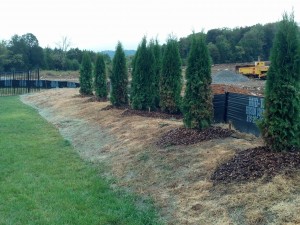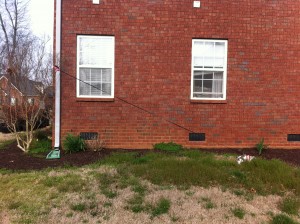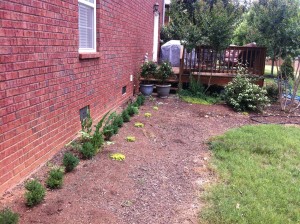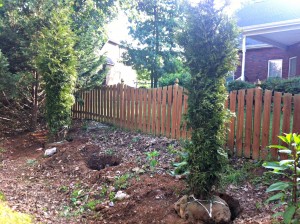Sprinklers work great for established, older plants. They are not ideal for newly planted trees and shrubs. When working with a new client, I emphasize watering the new plants almost daily. I worry when the client tells me “no sweat, I have a sprinkler system. The new tree will be fine.”
Now, don’t get me wrong. I love automation and low maintenance lawn and shrub care. But sprinklers can create false confidence.
Lawn sprinklers are designed to irrigate a specific area consistently. The problem lies in the fact that new plants need all the water at the root ball. Not near the sprinkler and not in the grass outside the root zone. Only at the roots and at the root’s edge. Remember to soak and allow the soil to dry.
Click here to learn how to water plants effectively.
Lawn sprinklers shouldn’t be used everyday. Allow the sprinklers to soak an area thoroughly. Check soil moisture with your finger and a shovel. If the ground is moist several inches deep then allow drying. When the top inch is powder dry, soak the area again.
If you’re unsure how to setup your sprinkler system, I would be happy to help. Water management is critical to succeeding the first time! Please leave a comment below with your best tip on being water-wise.








